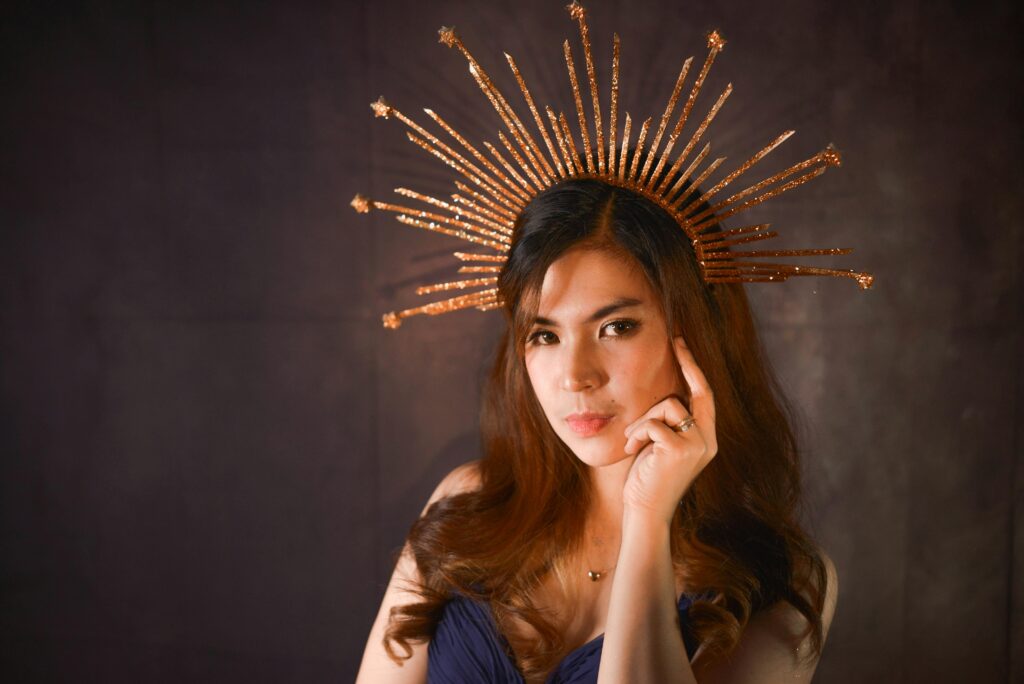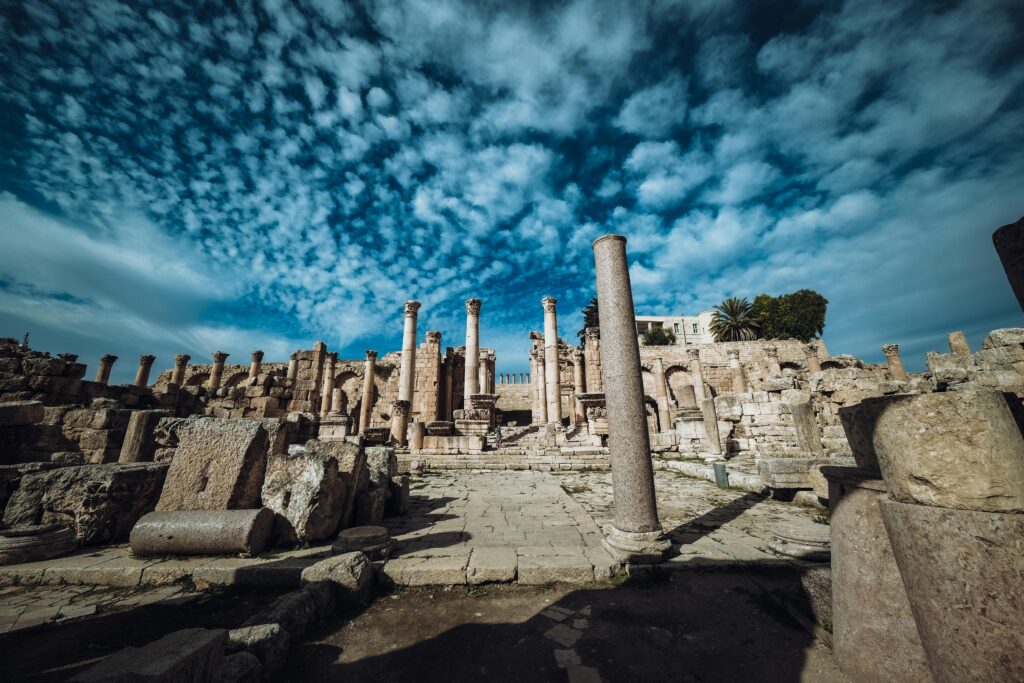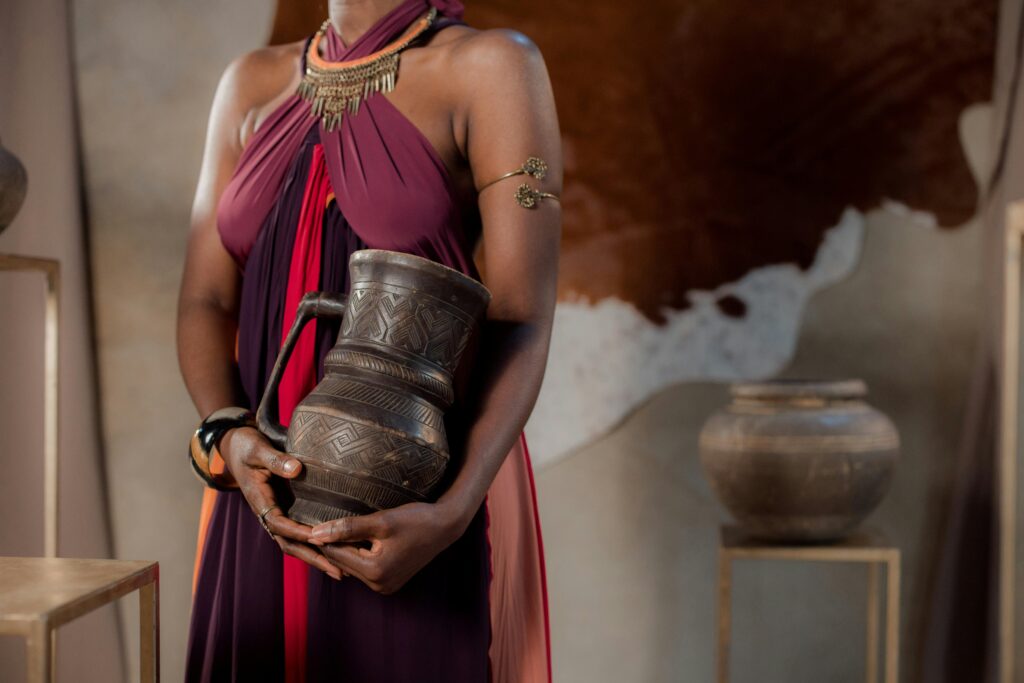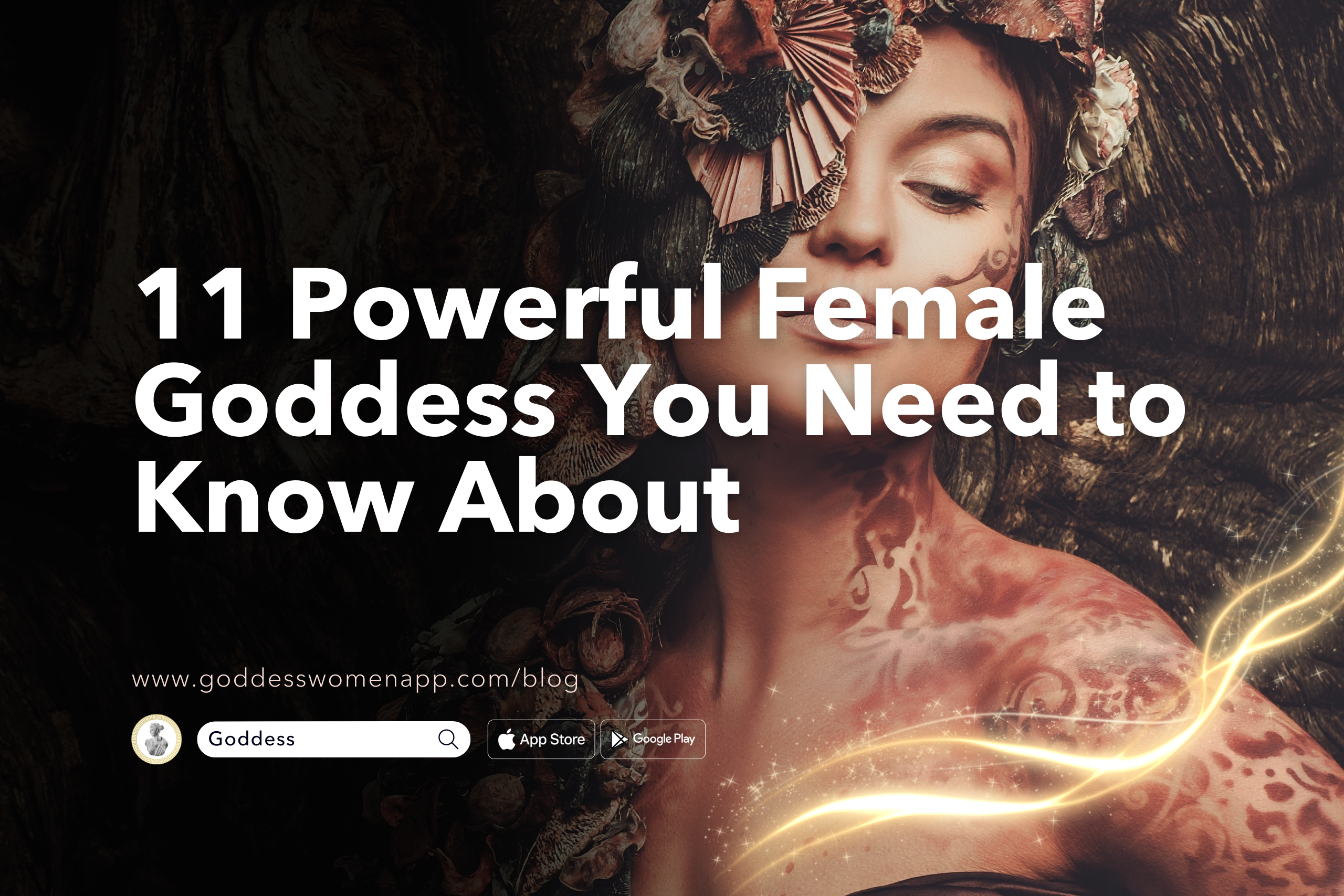Table of Contents

Introduction to Female Goddess
Welcome to a journey back in time, where myths were not just stories, but the very fabric of ancient lives, shaping cultures, values, and identities. In the heart of these tales lie the Roman and Greek goddesses, entities of immense power, wisdom, and complexity. Far from being mere characters in the pantheon, these goddesses represented the essence of divine femininity, embodying qualities that were revered, feared, and worshipped. Today, we embark on an exploration of these timeless figures, delving into the myths of Venus and Aphrodite, Minerva and Athena, and many more, to uncover the legacy they’ve left on our world. From the art that celebrates their beauty to the feminist movements that draw inspiration from their stories, Roman and Greek goddesses continue to influence us in profound ways. So, let us step into the realm of the divine feminine, where love, wisdom, and strength reign supreme.

1. Venus/Aphrodite – Goddess of Love and Beauty of Female Deities
In the pantheon of Roman and Greek mythology, Venus (to the Romans) and Aphrodite (to the Greeks) stand as the quintessence of love, beauty, and desire. These goddesses, though originating from different cultures, share similarities that have fascinated scholars and believers alike throughout history, embodying the complex nature of love in all its forms.
Aphrodite, born from the sea foam according to Hesiod’s Theogony, was revered as the divine force behind the attraction that binds the universe. Her powers extended beyond mere physical beauty, influencing the hearts of gods and mortals, sparking both love and war with equal ease. Her most famous myths, including her involvement in the judgment of Paris, which ultimately led to the Trojan War, showcase her as a deity whose favor could decide the fate of cities and the lives within them.
Venus, the Roman counterpart, while retaining the essence of love and beauty, was venerated as a multifaceted goddess who also oversaw victory, fertility, and prosperity. Her significance in Roman society was profound, with Julius Caesar himself claiming her as an ancestor, symbolizing the divine right and the inherent power of the Julian clan. Venus’s temples and festivals, such as the Veneralia, were central to Roman religious life, emphasizing goddesses featured her important role in ensuring the well-being and success of the community.
These goddesses’ portrayals in art and literature have left a lasting legacy on the representation of female divinity and the power of love. From Botticelli’s The Birth of Venus to the countless poems heroic stories and plays inspired by Aphrodite’s allure, their influence permeates Western culture, reminding us of the enduring power of beauty and the complex nature of love that can inspire both creation and destruction.She has inspired many more female figures.

2. Minerva/Athena – Goddess of Wisdom and Strategy
Minerva and Athena, the Roman and Greek goddesses of wisdom, strategy, and warfare, present a different facet of divine femininity. Unlike Venus and Aphrodite, whose realms are those of love and beauty, Minerva and Athena embody intellect, skill, and justice. Their stories and symbols reflect the high esteem in which wisdom and strategic warfare were held by female figures in ancient societies.
Athena, born from the head of Zeus fully armed and grown, was revered as the protector of Athens, which was named in her honor. She was not only a warrior goddess but also the patroness of craftspeople, poets, and philosophers, symbolizing the intellectual and civilized aspects of society. Her virginity was emblematic of her independence and purity, qualities that made her one of the most respected female deities ever in the Greek pantheon. The olive tree, which she gifted to the city of Athens, and the owl, her sacred animal, symbolize peace and wisdom, respectively.
Minerva, the Roman version of Athena, held a similar portfolio, overseeing not just war but also peace. She was one of the Capitoline Triad, along with Jupiter and Juno, worshipped at the Temple of Jupiter Optimus Maximus on the Capitoline Hill, the most important temple in Rome.
3. Ceres/Demeter – Goddess of Harvest and Agriculture
Ceres and Demeter, the Roman and Greek goddesses of harvest, agriculture, and fertility, embody the life-giving aspect of the earth. These deities were central to ancient societies that relied heavily on agriculture for their survival, making them among the most venerated figures in their respective pantheons. The rituals and festivals dedicated to them were not only acts of worship but also crucial community events that marked the sowing and harvesting seasons.
Demeter, in Greek mythology, is perhaps best known for her role in the myth of Persephone, her daughter, who was abducted by Hades, the god of the underworld. This myth explains the seasons; the earth flourishes when Persephone is with Demeter in the spring and summer, and withers when she returns to Hades in the fall and winter. The Eleusinian Mysteries, secretive and sacred rites conducted in Demeter’s honor, were among the most significant religious ceremonies in ancient Greece, promising initiates knowledge and power in this life and the next.

4. Diana/Artemis – Goddess of the Hunt and Moon
Diana and Artemis, the Roman and Greek goddesses of the hunt, wild animals, virginity, and childbirth, stand as figures of independence girl power, strength, and protection of the female figures. Both goddesses are often depicted as huntresses, carrying bows and arrows, and accompanied by animals, highlighting their connection to the wilderness and their mastery over it.
Artemis, the daughter of Zeus and Leto, and twin sister to Apollo, was a complex deity who embodied contradictions—both protector of the young and hunter of the stag. She was a guardian of women during childbirth, reflecting the wild and untamed aspects of mother nature that can both create and destroy. The sanctuary at Ephesus dedicated to Artemis was one of the Seven Wonders of the Ancient World, illustrating her importance across the Greek world.
Diana, in Roman religion, was worshipped as the goddess of the hunt and the moon, akin to Artemis, but also took on characteristics unique to Roman culture. As the protector of the lower classes, especially women and children, Diana’s worship was widespread among those who lived on the fringes of society, including slaves and freedmen. The Festival of Diana, held on August 13th, was a time for slaves to seek asylum in her temples, highlighting her role as a deity of the marginalized and oppressed. She has inspired many more female figures.

5. Juno/Hera – Queen of the Gods and Goddess of Marriage
Juno (in Roman mythology) and Hera (in Greek mythology) hold the esteemed titles of Queen of the Gods, the Mother goddess, and are revered as the goddesses of marriage and childbirth. Their marriages to Jupiter (Zeus in Greek mythology) positioned them at the pinnacle of the divine hierarchy, symbolizing the ideal of matrimonial fidelity, albeit within the tumultuous and often unfaithful unions depicted other female figures in myths.
Hera’s role in Greek mythology is multifaceted: she is at once the protector of marriage and a figure who often punishes Zeus’s numerous infidelities with clever and sometimes cruel vengeance. Despite her husband’s wanderings, Hera remained the epitome of marital loyalty and the guardian of married women around the world, embodying the ideals and challenges of wedlock.
Juno, sharing many attributes with her Greek counterpart, was particularly venerated in Roman culture as the patroness spider mother of Rome. The Matronalia, a festival celebrated in her honor, was a day when husbands would offer prayers for their wives, highlighting her role as the protector of women and marriage. Juno’s aspects also extended to childbirth, where she was invoked as Juno Lucina, the bringer of light, symbolizing the passage of a child from the womb into the world. She has inspired many more female figures.
6. Proserpina/Persephone – Queen of the Underworld
Proserpina (Roman mythology) and Persephone (Greek mythology) share a narrative that is both important stories central to ancient understandings of the seasons, death, and rebirth. As the daughter of Ceres/Demeter, Persephone’s abduction by Pluto/Hades and her subsequent reign as the Queen of the Underworld form the basis of her myth, illustrating the cycle of life, death, and the hope of renewal.
Persephone’s story begins with her abduction and eventual marriage to Hades, a union that initially brings grief to the world through her mother’s despair, causing the first winter. However, it also leads to the establishment of the cycle of seasons, as Persephone divides her time between the Underworld and the Earth’s surface, symbolizing the death of nature in winter and its rebirth in spring.
In her role as Queen of the Underworld, Persephone is not merely a passive figure but a powerful deity who oversees the dead’s fate, embodying the transition between life and death. Her dual role as a goddess of fertility and death illustrates the ancient belief in death as a necessary phase of life, leading to renewal and rebirth.

7. Hel: The Norse Goddess of the Underworld
In Norse mythology, Hel is a small terrifying, powerful woman ruler over Hel, the underworld in which all of the dead reside. She is one of the powerful female figures. She empower readers. He was famous for her mother’s graboo ancestor Loki. She had wolves and serpents. And all of their families were great people. Hel has a dark, fierce expression in her face which often describes herself as half black, half white, and half black. Hel is really a queen of zero f***s given her attitude.
8. Amaterasu: The Most Important Deity of the Shinto Religion
Amamaterasu Omikami as her name indicates, had the power over the sky from his parents. Her name literally means the great god – illuminates heavens. It’s also called the realm of the spirit and ruler of the higher cosmic plain. She is also famous for having removed her brother Susanno from the heaven of the Shintos after he had argued to death. Although Amaterasu looks beautiful, she is notorious for being resolute when people dislike her. Another occasion, Susanoo irritated her and broke her sword into three parts and ate them and raked them out as the other female gods. The girl should make the right decision, I have the same job as the girl.
9. Hina: The Polynesian Goddess of the Moon
Hina is a goddess whose myth covers most of Polynese culture. Each culture is unique to their respective Hina stories although New Zealand is said to have her as a sister or mother Maua. Hina is a close ally on the Moon after her failed attempt to climb into the Sun sparked a desire on its surface to go back to the moon to stay forever. Hina managed to make it onto the moon even though her earthly husband Maui had tried to prevent them. Since then legends say Hina and her calabash have been seen on her celestial home.
10. Morrigan: The Irish Goddess of Battle and War
Phantom Queen Morrigan was an Irish Goddess that often predicted fate for war and fighting. Seeing her when he was washing his weapon the day before he attacked would indicate that he was to die on this day. Morrigan is sometimes represented as crow or raven, but remains considered one of the more complex figures of the mythical Irish. Not only did her family history look complicated but she also had a complex personality and sounded violent, harsh, and even violent. Initially she wasn’t seen by many as being threatened by others, but she was simply a strong commander. It was respectable for everyone, but never had any reason for a person to. Definitely our Girl bosses!
11. Kali: The Hindu Goddess who Crushes Egos
Kalis is a nice blue Hindu god with several arms. Kali is a Goddess of Death. The girl was only depicted as killing a demon and had no role in the process of death, unlike other Hindu gods and goddesses. When one thinks about Kali the mind trembles in fear and sees the end of her destruction of demons and death. The person who is too attached to egos wont allow Mother Kali into their lives hence she is seen as frightening.

FAQ Section
Who is the best female goddesses?
The concept of the “best” feminine goddess varies depending on cultural contexts, personal beliefs, and what qualities or aspects one values most. In Greek and Roman mythology, goddesses like Athena/Minerva, goddess of wisdom and warfare, and Aphrodite/Venus, goddess of love and beauty, hold significant places. In other cultures, figures such as Isis in Egyptian mythology or Hindu Goddesses Durga in Hinduism are revered. Ultimately, the best goddess is subjective and can be the one with whom you feel the deepest personal connection or admiration. They all empower readers.
Who is the badass, primordial goddess?
Many goddesses, female figures, fearsome warriors across various mythologies embody the archetype of the “badass” through their strength, independence, and powerful stories. Artemis/Diana, the goddess of the hunt, wilderness, and childbirth, is often celebrated for her fierce autonomy and protective nature. Similarly, Kali, from Hindu mythology, embodies the fierce aspect of the divine mother, with her depiction as a destroyer of evil forces. These goddesses’ stories highlight their strength, resilience, and the ability to defy expectations.
Who is the powerful goddess?
Several female figures are renowned for their immense power and influence. In Greek mythology, Athena is revered for her wisdom, strategic warfare skills, and patronage of Athens. Similarly, in Roman mythology, Juno (Hera in Greek mythology) holds significant power as the queen of the gods and the goddess of marriage and childbirth. In the Egyptian pantheon, Isis is known for her magical prowess and her role as the mother of Horus. Each of these goddesses demonstrates power in unique ways, be it through wisdom, rulership, or magic. They all empower readers
What is the feminine of goddess?
The term “goddess” itself is the feminine form of “god,” specifically referring to a female deity. In languages and cultures worldwide, female deities are often associated with aspects such as fertility, creation, protection, and natural phenomena. The term embodies the divine feminine principle, which complements the divine masculine, reflecting a balance present in many religious and spiritual traditions and shaping belief today.
Conclusion to Female Deities
The timeless wisdom of Roman and Greek goddesses continues to echo through the ages, offering insights and guidance that resonate deeply in our contemporary lives. From Aphrodite’s lessons on love and beauty to Athena’s embodiment of wisdom and strategy, these female figures inspire us to navigate the complexities of the modern world with grace, strength, and compassion. Embracing the qualities and teachings of these goddesses can help us to foster a deeper connection with ourselves, each other, and the world around us, encouraging us to live more fulfilled, balanced, and meaningful lives. They all empower readers since the goddesses featured are powerful female figures.
Visit the Goddess app and take our Goddess Archetype Test. This interactive quiz is designed to help you uncover the full list of goddesses featured, the female figures, that aligns with your personality, strengths, and life journey. Whether you embody the creativity and passion of Aphrodite, the independence and connection to nature of Artemis, or the wisdom and courage of Athena, finding your goddess archetype can be a powerful step in your personal growth and self-discovery journey.Follow us to read more on male god archetypes.





